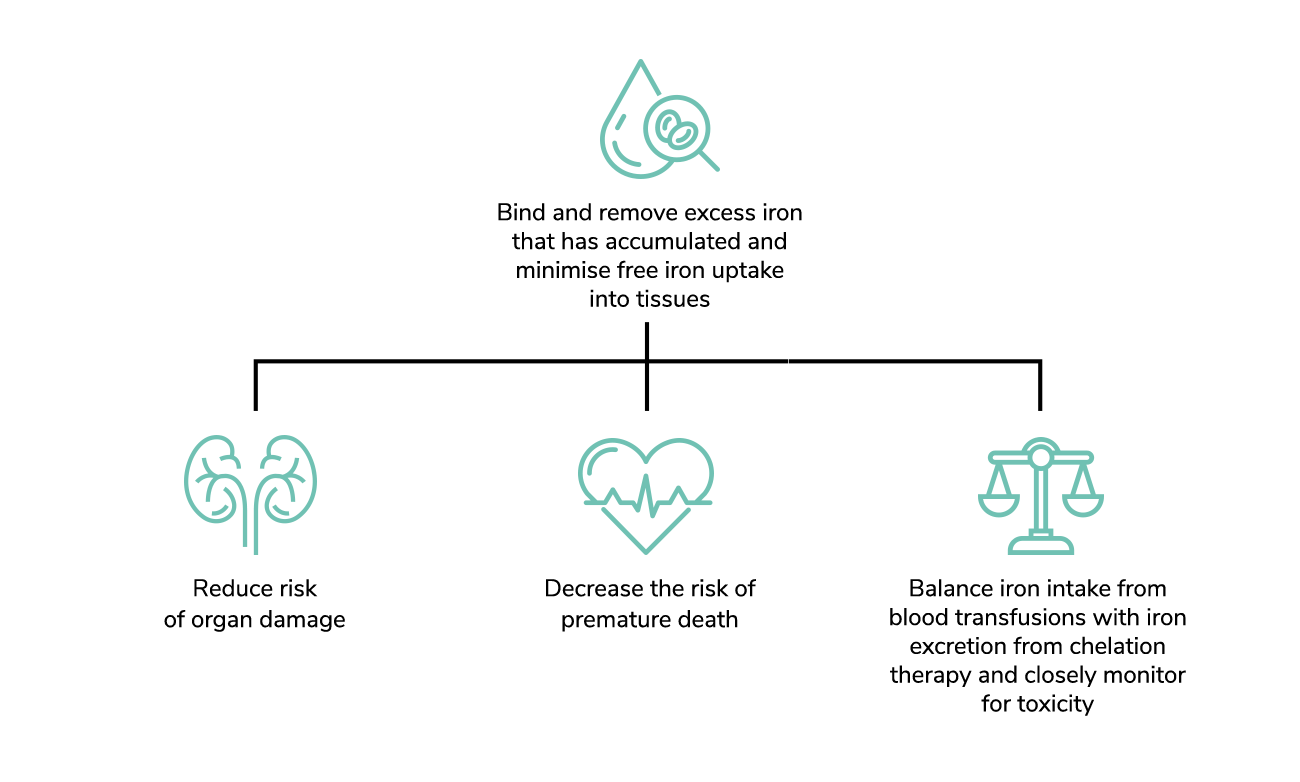Inadequate iron chelation increases the risk of life-threatening complications
60-70% of deaths in thalassaemia major patients are due to heart complications and disease7*
Sickle cell patients receiving transfusions had 4.1 hospital stays per year vs. 2.1 for non-transfused patients8†
The death rate is 3X higher among sickle cell disease and thalassaemia major patients with transfusional iron overload8†
*Based on a total of 1,073 patients diagnosed with thalassaemia major before the age of 3. Click here to read the full study. †Based on a study of patients who were either currently on or had received regular transfusion therapy and confirmed to have iron overload as defined by a liver iron concentration (LIC) of >10 mg/g dry weight or 3 serum ferritin values that averaged ≥2,000 ng/mL within the previous 12 months. 142 patients with thalassaemia and 199 patients with sickle cell disease who received regular transfusions were included in the study group and compared with 64 non-treated sickle cell disease patients as controls. Despite improvements in therapy, death rate in this contemporary sample of transfused adult subjects with Thal or SCD is 3 times greater than the general US population. Click here to read the full study
If removal of NTBI can be achieved, complications of iron overload can be reduced or eliminated1,6
Objectives of iron chelation therapy1, 9, 10



Depending on the organ, it can take a long time to reduce iron.1,5
For HCP: In case you want to report an adverse drug reaction you become aware of, please report it to your Health Authority according to the requirements set by the pharmacovigilance legislation.